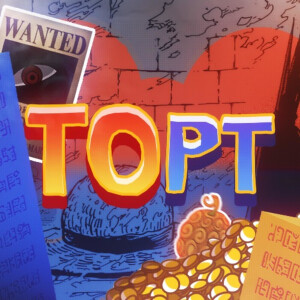More Episodes
Comic Picks #231: Chew
 2017-02-22
2017-02-22
 24
24
Comic Picks #230: Lone Wolf & Cub
 2017-02-08
2017-02-08
 33
33
Comic Picks #229: Tom King
 2017-01-25
2017-01-25
 24
24
Comic Picks #228: Best of 2016
 2017-01-11
2017-01-11
 25
25
Comic Picks #227: Star Wars -- Darth Vader
 2016-12-28
2016-12-28
 36
36
Comic Picks #226: X-Men -- Apocalypse Wars
 2016-12-14
2016-12-14
 39
39
Comic Picks #225: Attack on Titan
 2016-11-30
2016-11-30
 37
37
Comic Picks #224: Transmetropolitan
 2016-11-16
2016-11-16
 38
38
Comic Picks #223: Doctor Strange
 2016-11-02
2016-11-02
 36
36
Comic Picks #222: Bloom County
 2016-10-19
2016-10-19
 39
39
Comic Picks #221: Velvet
 2016-10-05
2016-10-05
 32
32
Comic Picks #220: Kosuke Fujishima
 2016-09-21
2016-09-21
 36
36
Comic Picks #219: What's On My Kindle?
 2016-09-07
2016-09-07
 42
42
Comic Picks #218: Tezuka's Kickstarters
 2016-08-24
2016-08-24
 33
33
Comic Picks #217: Suicide Squad
 2016-08-11
2016-08-11
 31
31
Comic Picks #216: The Fade Out
 2016-07-27
2016-07-27
 25
25
Comic Picks #215: Bendis' X-Men
 2016-07-13
2016-07-13
 51
51
Comic Picks #214: A Silent Voice
 2016-06-29
2016-06-29
 32
32
Comic Picks #213: Sergio Aragones' Groo
 2016-06-15
2016-06-15
 47
47
Comic Picks #212: Molester Man/Onani Master Kurosawa
 2016-06-01
2016-06-01
 61
61
Create your
podcast in
minutes
- Full-featured podcast site
- Unlimited storage and bandwidth
- Comprehensive podcast stats
- Distribute to Apple Podcasts, Spotify, and more
- Make money with your podcast
It is Free
You may also like

That One Piece Talk


The One Piece Podcast


Mobile Suit Breakdown: the Gundam Podcast


More Than Hentai | An Anime Appreciation Podcast


Spy x Family Manga Reading Club / Weird Science Manga


- Privacy Policy
- Cookie Policy
- Terms of Use
- Consent Preferences
- Copyright © 2015-2024 Podbean.com


 iOS
iOS Android
Android